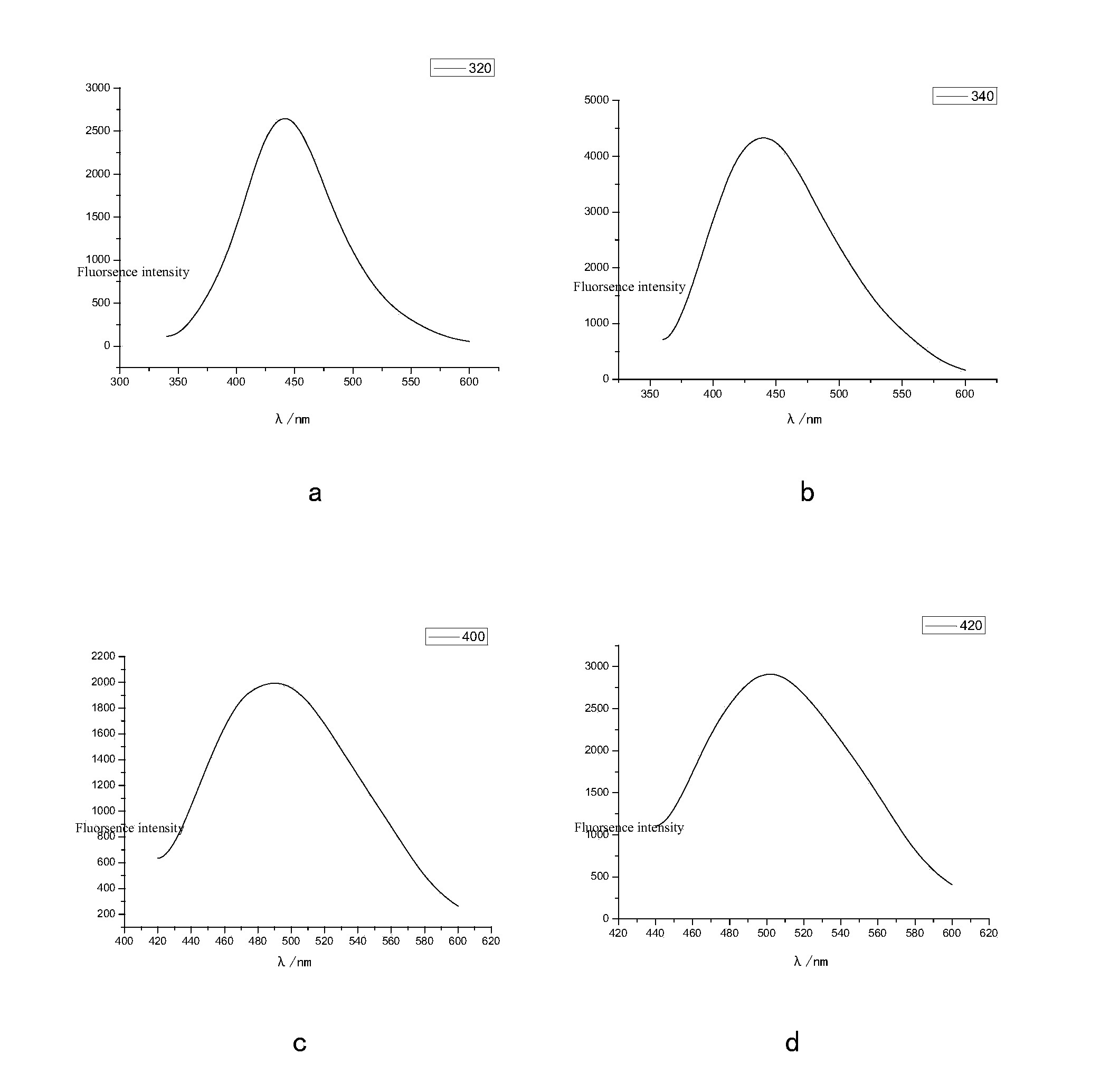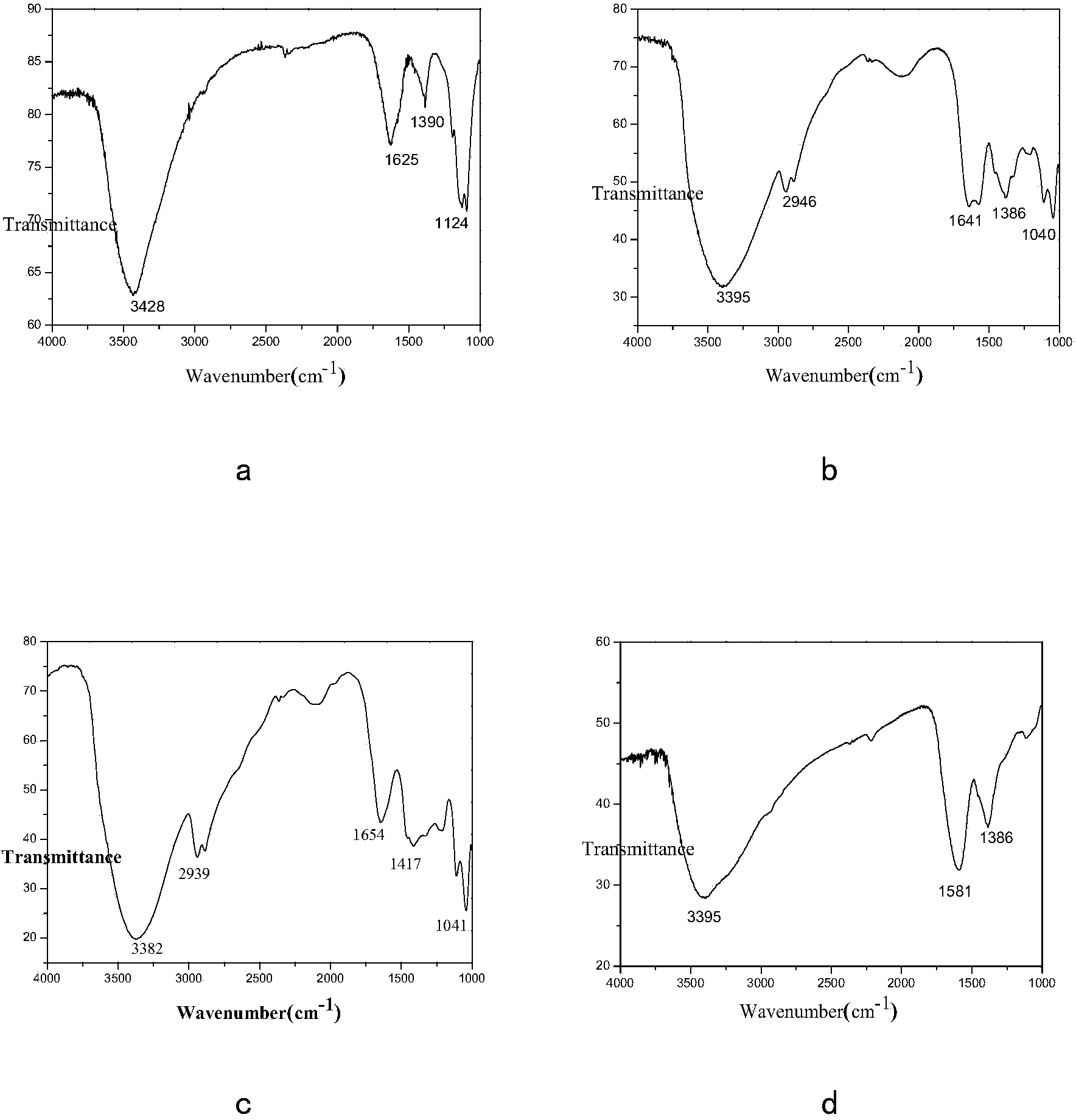Preparation method for water-soluble carbon dots
A water-soluble carbon dot and solution technology, applied in the fields of chemistry and material science, can solve the problems of complex operation, secondary pollution, low yield, etc., and achieve the effect of simple and convenient operation
- Summary
- Abstract
- Description
- Claims
- Application Information
AI Technical Summary
Problems solved by technology
Method used
Image
Examples
Embodiment 1
[0026] Carbon dots were prepared from bagasse as follows:
[0027] 1) After removing the dross from the bagasse, dry it, pulverize it, put it in a crucible and calcinate it in a muffle furnace at 350°C for 80min.
[0028] 2) Weigh 1 g of calcined ash into a conical flask, add 100 mL of double distilled water, and sonicate for 1 h.
[0029] 3) Suction filter the solution after ultrasonication, take the filtrate, centrifuge at a speed of 12000r / min for 30min, take the supernatant after centrifugation to obtain a carbon dot solution.
[0030] 4) After drying and weighing, re-dissolve with twice distilled water to obtain a carbon dot solution with a mass concentration.
Embodiment 2
[0032] Prepare carbon dots from melon seed shells as follows:
[0033] 1) After removing the dross from the melon seed shells, dry and pulverize them, place them in a crucible and calcinate them in a muffle furnace at 380°C for 80 minutes.
[0034] 2) Weigh 1 g of calcined ash into a conical flask, add 100 mL of double distilled water, and sonicate for 1 h.
[0035] 3) Suction filter the solution after ultrasonication, take the filtrate, centrifuge at a speed of 12000r / min for 30min, take the supernatant after centrifugation to obtain a carbon dot solution.
[0036] 4) After drying and weighing, re-dissolve with twice distilled water to obtain a carbon dot solution with a mass concentration.
Embodiment 3
[0038] Prepare carbon dots from okara according to the following steps:
[0039] 1) Dried bean dregs were dried and pulverized, placed in a crucible and calcined in a muffle furnace at 350°C for 80 minutes.
[0040] 2) Weigh 1 g of calcined ash into a conical flask, add 100 mL of double distilled water, and sonicate for 1 h.
[0041] 3) Suction filter the solution after ultrasonication, take the filtrate, centrifuge at a speed of 12000r / min for 30min, take the supernatant after centrifugation to obtain a carbon dot solution.
[0042] 4) After drying and weighing, re-dissolve with twice distilled water to obtain a carbon dot solution with a mass concentration.
PUM
 Login to View More
Login to View More Abstract
Description
Claims
Application Information
 Login to View More
Login to View More - R&D
- Intellectual Property
- Life Sciences
- Materials
- Tech Scout
- Unparalleled Data Quality
- Higher Quality Content
- 60% Fewer Hallucinations
Browse by: Latest US Patents, China's latest patents, Technical Efficacy Thesaurus, Application Domain, Technology Topic, Popular Technical Reports.
© 2025 PatSnap. All rights reserved.Legal|Privacy policy|Modern Slavery Act Transparency Statement|Sitemap|About US| Contact US: help@patsnap.com



